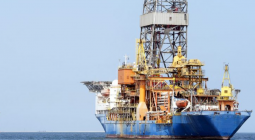How Kenya can make decisions on natural gas.

Supply of natural gas by pipeline from Tanzania was a key agenda when President Suluhu Hassan of Tanzania visited Kenya last week.
Supply of piped natural gas from Tanzania has been explored before, but its urgency reduced at the height of Kenya’s oil and gas exploration activities (2012-2016) when Kenya had high hopes of discovering commercial quantities of natural gas, which did not happen.
Subsequent collapse of global oil prices has reduced investor appetite for oil and gas search in Kenya.
Natural gas is mainly methane, the simplest hydrocarbon molecule. Among the fossil fuels it has the lowest carbon content giving it high “green” credentials.
When natural gas is liquefied under low temperatures, it is called LNG (Liquefied Natural Gas) and when compressed under high pressure, it is CNG (Compressed Natural Gas). It is transported in pipelines as piped gas under lower pressures.
Tanzania discovered commercial quantities of natural gas in early 2000s and has since commercialised piped natural gas for power generation and heavy industries, with ambitions to Uganda and Kenya by pipelines. Tanzania’s plans for offshore LNG exports will materialise when major investors finalise investment decisions and construct necessary LNG infrastructure.
Following the natural gas agreement signed last week, it can be expected that a feasibility study commissioned by the two countries will follow. The study will establish demand for natural gas by Kenya; undertake pipeline sizing and routing; determine project capital costs, shareholding, and financing options. It is during this period that Kenya will need to think through several policy issues prior to firming up commitments.
Any natural gas imported into Kenya would essentially be replacing imported fuel oil and coal that are currently feeding thermal power plants and heavy industries located at the coast. While need for natural gas for heavy industries (cement, steel etc.) is without contention, Kenya will however need to decide how, in a scenario of stagnant electricity demands, the existing fuel oil power plants will co-exist with new generation from natural gas. Technically it is likely that existing fuel oil power plants can be converted to use natural gas.
Of interest for power generation, will be the “energy content” unit costs of natural gas which will need to equal or exceed those of fuel oil to ensure that feed-in tariffs do not escalate.
Any natural gas supply agreement signed with Tanzania will need to have effective clauses that will ring-fence prices from global commodity volatility. Natural gas prices are usually indexed against commodity crude oil prices which are known to swing wildly. Pricing basis will need to be agreed early on.
The agreement will also need to include a break-clause that defines what will happen should commercial quantities of natural gas be discovered in the Kenyan coastal areas, a possibility which I continue to believe will happen.
In respect of prioritisation of “imported” national gas in national power generation-mix, it is important that natural gas competes fairly on its merits when evaluated against the other competing resources- geothermal, hydro, wind, and solar. Factors to be considered are size of projected power demands; feed-in tariffs; climate change impacts; wider national economic value addition like jobs; foreign exchange implications (imported vs indigenous resource); price stability and volatility; and above all national energy supply security.
Further, a fresh power demand projection is required followed by an independent and transparent evaluation of what energy types will be prioritised in the national energy mix. This should be done free of influence from vested interests and climate lobbies. Yes it is an independent decision-making process defining options for energy resource prioritization to maximize national economic value addition. It should not be investor influenced or driven.
All said and done, natural gas (imported or locally produced) is a major opportunity for industrialisation. Making of ammonium-based fertilizers essentially involves reacting air (to provide nitrogen) and natural gas (to provide hydrogen). Natural gas is also a primary feedstock for making plastics polymers.
Finally, I believe that the Terms of Reference for the John Ngumi led power review committee should be expanded to oversee a new independent power demand study, and determination of shares of electricity types in national generation-mix. This is how we shall objectively know where natural gas will sit in the priority hierarchy.
12 May 2021
Business Daily




